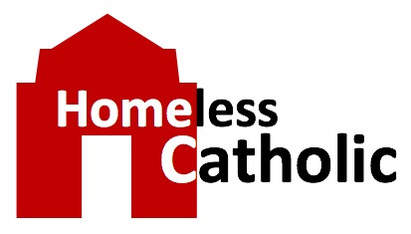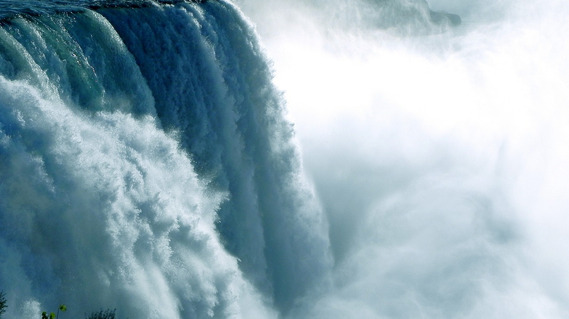John, the Baptizer, Baptism, & Water
Christ came to restore the divine life lost through the sin of Adam and Eve. From the time of Adam and Eve until Jesus’ birth, God prepared us for the sacrament of Baptism through events and prophecies in the Old Testament.
In Genesis 1:2, we read that the Spirit of God moved over the waters. The Holy Spirit sanctified water, the source of the first life.
Image by urformat
John, the Baptizer, Baptism, & Water
By Lou Occhi
Christmas Weekday - Lectionary: 209
Today’s readings center on John, the Baptizer, and Baptism. The first reading from 1 John states, “This is the one who came through Water and the Blood, Jesus Christ, not by Water alone, but by Water and Blood. The Spirit is the one who testifies, and the Spirit is truth. So, there are three who testify, the Spirit, the Water, and the Blood, and the three are one accord.” Then, in Mark’s gospel, we read, “This is what John the Baptist proclaimed: One mightier than I is coming after me. I am not worthy to stoop and loosen the thongs of His sandals. I have baptized you with water, He will baptize you with the Holy Spirit.” Since this is all about Baptism, I decided to reflect on Baptism.
Christ came to restore the divine life lost through the sin of Adam and Eve. From the time of Adam and Eve until Jesus’ birth, God prepared us for the sacrament of Baptism through events and prophecies in the Old Testament.
In Genesis 1:2, we read that the Spirit of God moved over the waters. The Holy Spirit sanctified water, the source of the first life. In Genesis 3:20, sinners are washed away, and Noah and his family are saved by wood and water. The Catholic Catechism 1221 states, “O God, who caused the children of Abraham to pass dry-shod through the Red Sea, so that the chosen people, set free from slavery to Pharaoh, would prefigure the people of the baptized.”
2 Kings 5:10 tells the story of Naaman, a commander under the king of Syria. Naaman has leprosy and hears that a prophet in Israel may be able to cure him. With the King's permission, he travels to Israel. When he arrives at Elisha's home, a messenger tells him to dip into the Jordan River seven times. Naaman is furious that Elisha did not come out to greet him. He also complained that many rivers in Syria are finer than the Jordan. His servant pleads with him to proceed to the river and do as Elisha had suggested. Naaman relented and dipped himself into the Jordan seven times. On the seventh time, his flesh was completely restored to health. This is a direct correlation to Baptism.
One last example I witnessed occurred in Israel. We were visiting the area of Qumran. Qumran dates back to before the time of Christ. When a Jew contacts an impure substance such as blood, purification is required. The now impure Jew must walk through a purification bath. The bath resembles a small in-ground swimming pool and has two stairways. One stairway descends into the pool. The other ascends out of the pool. The impure Jew uses the descending stairway into the pool. Once purified, he uses the ascending stairway. Again, we have something very similar to a baptism.
Now we move to the New Testament. Perhaps the first baptism occurred when Mary visited her cousin Elizabeth. Luke 1:41-44 states, When Elizabeth heard Mary’s greeting, the infant leaped in her womb, and Elizabeth, filled with the Holy Spirit, cried out in a loud voice and said “Most blessed are you among women and blessed is the fruit of your womb. And how does this happen to me, that the mother of my Lord should come to me? For at the moment the sound of your greeting reached my ears, the infant in my womb leaped for joy.”
Here, we have two possible forms of baptism. Overcome by the Holy Spirit, Elizabeth becomes aware of Mary’s pregnancy and the child she bore. Still in Elisabeth’s womb, John leaps for joy over Jesus's presence. Some say that John was Baptized by water by Jesus, still in His mother's womb. This is not scripture, but certainly worth considering.
Today, the Catholic Catechism has several items defining Baptism. The first defines Baptism as follows:
“Holy Baptism is the basis of the whole Christian life, the gateway to life in the Spirit (vitae spiritualis ianua), and the door which gives access to the other sacraments. Through Baptism, we are freed from sin and reborn as sons of God; we become members of Christ, are incorporated into the church, and made sharers in her mission: Baptism is the sacrament of regeneration through water and the word.”
When I think of Baptism, I usually think of Baptism by Water. John performed Baptism in water. As we have already discussed, the Old Testament alludes to Baptism in water. There are two more forms of Baptism.
Baptism by the Holy Spirit, sometimes called Baptism by Fire, is another form of Baptism. We recall Jesus breathed over the apostles and caused tongues of fire to descend over them and fill them with the Holy Spirit. Immediately, the Apostles understood all that Jesus was teaching them. Elizabeth did not have the tongues of fire, but she was instantly aware of Mary’s baby. This is a Baptism by the Holy Spirit.
The third form is Baptism by Blood. This is the case for martyrs who give their lives defending the faith, or sacrifice their lives for others. St. Maximillian Kolbe gave his life in a concentration camp for the simple act of defending his faith. In addition, he traded his life for another prisoner who had a wife and children in the camp. The prisoner and his family survived the concentration camp and testified on behalf of Kolbe’s sainthood.
All this brings us back to John saying, “So, there are three who testify, the Spirit, the Water, and the Blood, and the three are one accord.” Jesus was brought into humanity by the Holy Spirit, overshadowing our Blessed Mother. He was baptized in water by his cousin John. He was baptized by blood when he sacrificed His life on the cross for the salvation of all humankind. Since we are to follow Jesus, we, too, need baptism in one form or another so we can be reborn as sons of God.

